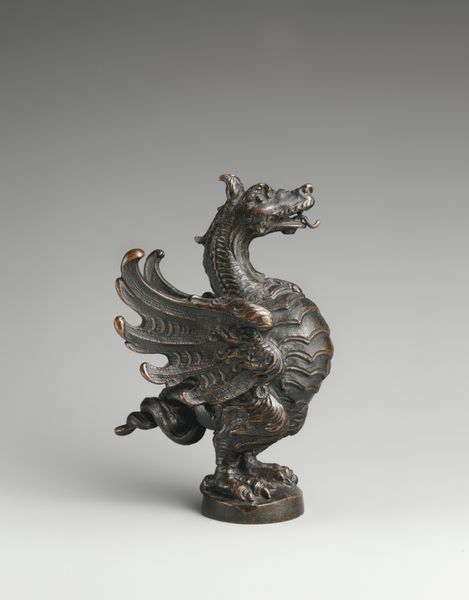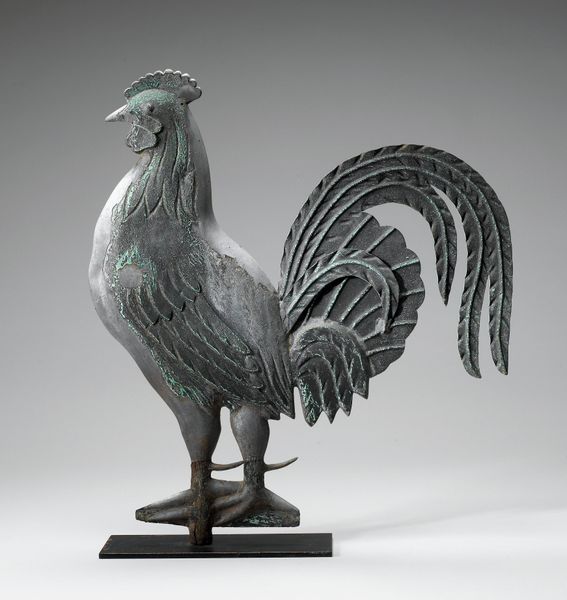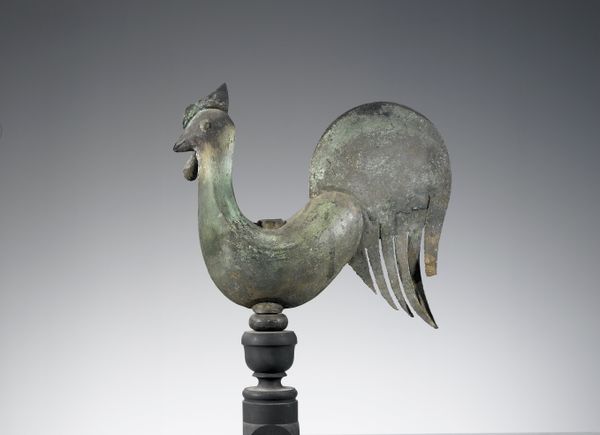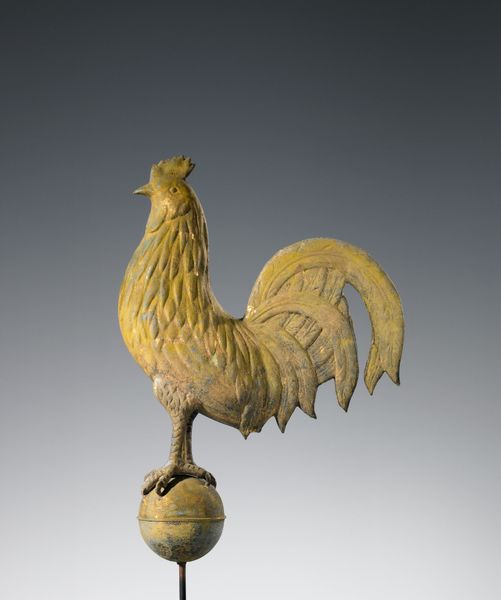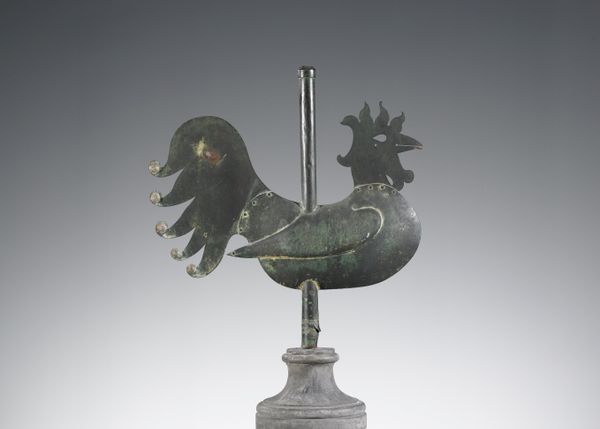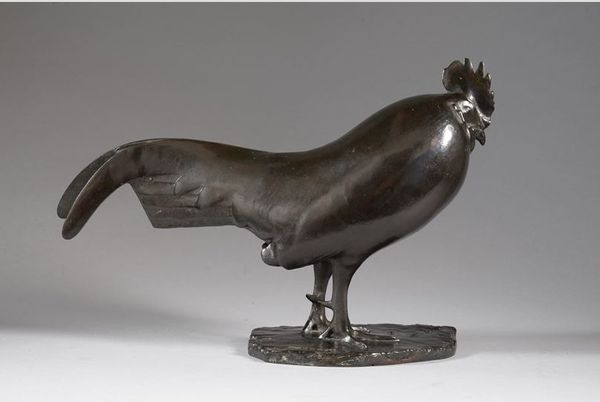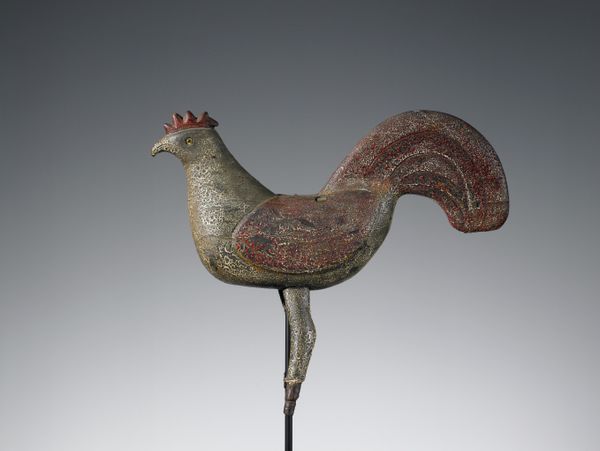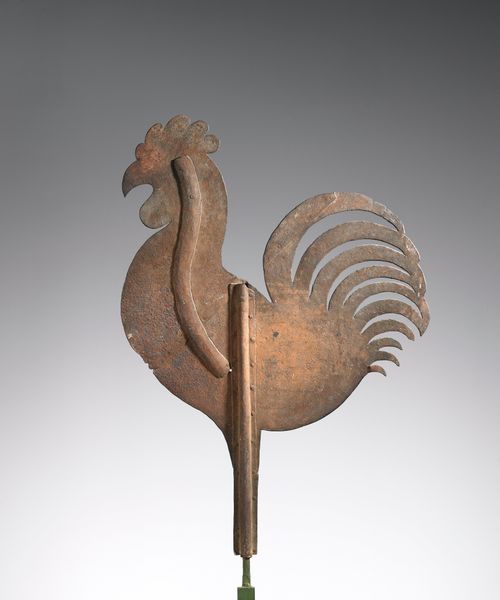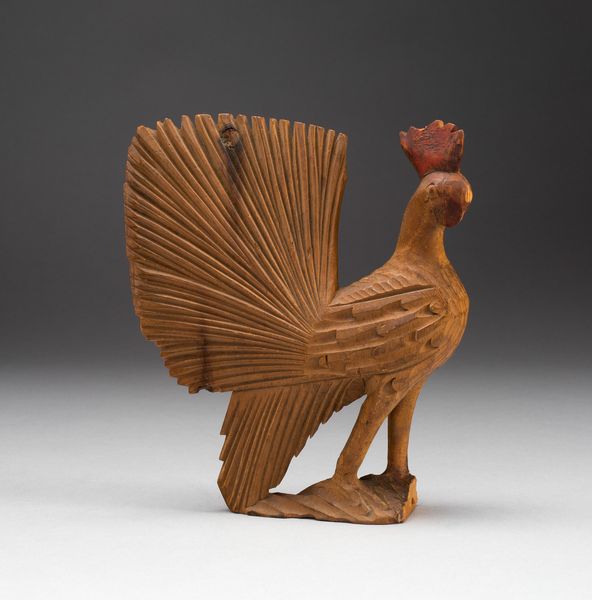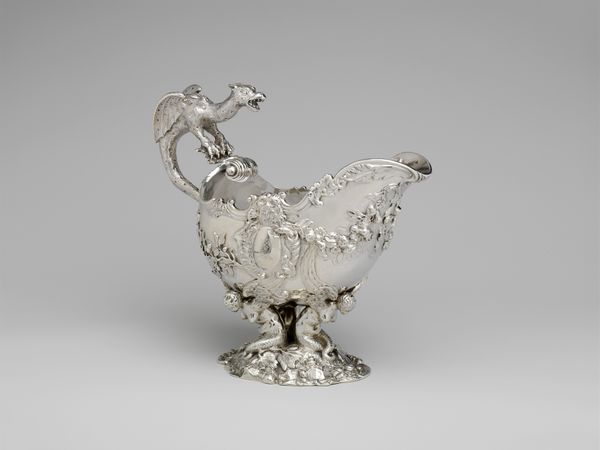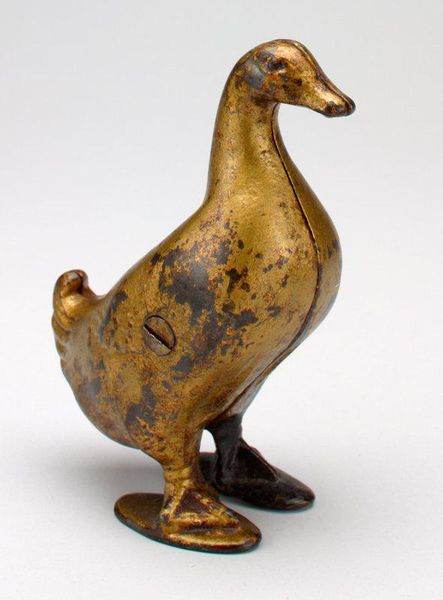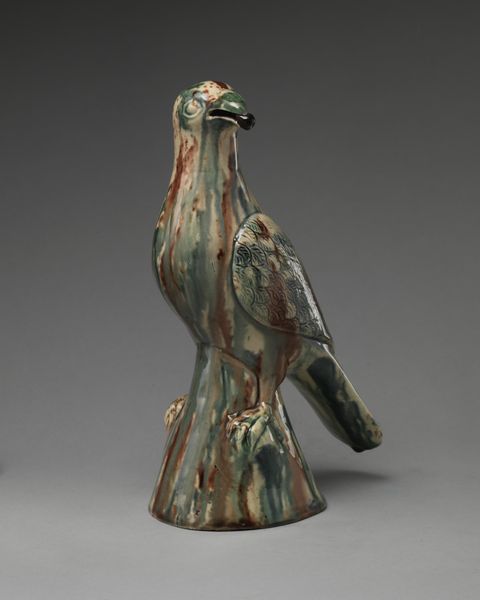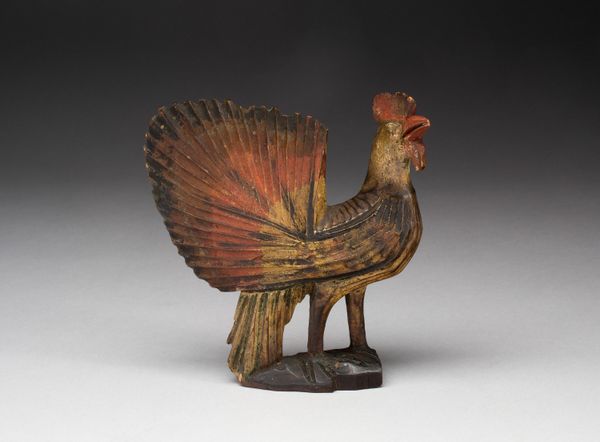
bronze, sculpture
#
portrait
#
animal
#
sculpture
#
bronze
#
sculpture
#
decorative-art
#
realism
Dimensions: Overall (confirmed): 8 13/16 × 7 1/8 × 3 1/4 in. (22.4 × 18.1 × 8.3 cm)
Copyright: Public Domain
Curator: Here we have a bronze sculpture called "Rooster," thought to have been crafted sometime between 1800 and 1940, and currently residing at the Metropolitan Museum of Art. What's your take on our feathery friend? Editor: Oh, he's got attitude! Look at the way he’s perched – all puffed up, ready to announce the day. You can practically hear the cock-a-doodle-doo, even frozen in bronze. Curator: Indeed! There’s an incredible vitality Giambologna (after whom it is modeled) manages to capture. It's really remarkable. You get the feeling of realism in the form. Editor: Realism, yes, but consider the material. Bronze wasn’t just chosen for its aesthetic appeal. It was a deliberate decision rooted in power, prestige, a sort of permanence the artists and patrons sought, echoing back to classical ideals. Think of the mining, the smelting, the labor, and the artistry involved to cast the material—craft as wealth. Curator: Absolutely, the choice of bronze is loaded with significance. But, look how the light plays on its surface – dark shadows highlighting the texture of each feather, almost like an oil painting on metal. Editor: Speaking of light, the texture is key. Each stroke on the rooster alludes to labor division where a series of skilled sculptors translated Giambologna original ideas into the casting, chasing, and finishing, underscoring the value placed on hand craftsmanship during industrialization and increased alienation of workers and designers from production. Curator: But it also brings life, don't you think? And think of the symbolism! The rooster has represented courage, vigilance, and even resurrection throughout history. It would’ve resonated profoundly with viewers then. I wonder though, did it evoke something different in your perspective? Editor: To me, beyond the obvious symbolism, this rooster is an artifact of material culture, of complex system of labor division; it encapsulates artistry and craftsmanship under societal systems. What I find impressive is the translation and mastery in bringing art to such a large crowd of viewers in various medium! Curator: A thought-provoking point indeed! Editor: Right. Thinking of the art as just materials—and considering art and wealth—really changed how I saw it.
Comments
No comments
Be the first to comment and join the conversation on the ultimate creative platform.
